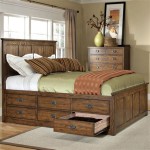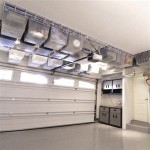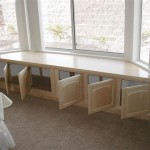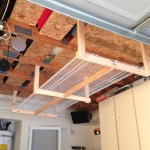Maximizing Space With Sheet Rack Storage System Design
Sheet rack storage systems are vital for industries dealing with sheet materials such as metal, wood, plastic, and composites. These systems offer a structured and efficient solution for managing inventory, reducing material damage, and, crucially, maximizing available space. The design of these systems is paramount, influencing accessibility, safety, and overall operational efficiency. A thoughtfully designed sheet rack storage system can transform a cluttered and unproductive workspace into a streamlined and organized environment, directly impacting profitability and workflow.
Effective sheet rack storage system design goes beyond simply providing a place to store materials. It involves careful consideration of several factors, including the type and volume of materials being stored, the available floor space and ceiling height, the frequency of access required, and the safety regulations relevant to the specific industry. Ignoring these factors can result in a system that is difficult to use, inefficient, and potentially hazardous.
The selection of the appropriate type of sheet rack is a critical first step. Options range from vertical racks that capitalize on vertical space to horizontal racks that offer easier access to individual sheets. Cantilever racks are often employed for storing long, bulky items, while drawer-style systems are ideal for smaller sheets or remnants that need to be easily accessible and protected. Each type has its own advantages and disadvantages, and the optimal choice will depend on the specific needs of the operation.
Understanding Material Characteristics and Storage Requirements
The properties of the materials being stored are a primary driver in sheet rack storage system design. The weight, dimensions, and fragility of the sheets all influence the load-bearing capacity, dimensions, and protective features of the rack. For example, storing heavy gauge steel sheets requires a robust rack system with sufficient load capacity and reinforcement to prevent bending or collapse. Lighter materials, such as thin aluminum sheets or plastic panels, may require less structural support but may need additional protection against scratches or dents. Similarly, materials that are sensitive to moisture or temperature fluctuations may require enclosed or climate-controlled storage solutions.
The volume of materials stored also plays a significant role in the design process. A small operation with a limited inventory may only need a simple, modular rack system that can be expanded as needed. A large-scale manufacturing facility, on the other hand, may require a more sophisticated and automated storage system that can handle a large volume of material with minimal manual handling. This may involve the use of automated storage and retrieval systems (AS/RS) that utilize robotic arms or cranes to move materials in and out of storage. These systems can significantly reduce labor costs and improve storage density, but they also require a significant investment in infrastructure and software.
The frequency of access to the stored materials is another crucial factor to consider. If sheets are frequently accessed, the rack system should be designed to provide easy and convenient access to individual sheets without requiring the movement of other materials. This can be achieved through the use of drawer-style racks, vertical racks with pull-out shelves, or cantilever racks that allow for direct loading and unloading with a forklift. If sheets are rarely accessed, a more dense storage system that prioritizes space utilization over accessibility may be more appropriate. This could involve the use of vertical racks with tightly packed rows or automated storage and retrieval systems that require specialized equipment to access individual sheets.
Optimizing Space Utilization for Maximum Efficiency
Space optimization is the driving force behind implementing sheet rack systems. Effective design maximizes storage density, freeing up valuable floor space for other activities such as manufacturing, assembly, or material handling. This is particularly important in facilities where space is limited or expensive. Vertical rack systems are particularly effective at maximizing vertical space, allowing for the storage of a large volume of material in a relatively small footprint. By utilizing the available height, operations can significantly increase their storage capacity without expanding their physical footprint.
However, maximizing space utilization should not come at the expense of accessibility. A tightly packed storage system that is difficult to navigate or access can be counterproductive, leading to increased labor costs, material damage, and safety hazards. The design of the rack system should strike a balance between storage density and accessibility, ensuring that materials can be easily accessed when needed without compromising safety or efficiency.
The layout of the sheet rack system within the workspace is also critical. The racks should be positioned in a way that minimizes travel distances for workers and material handling equipment. This can be achieved by placing the racks near the points of use or by creating dedicated material handling pathways that allow for efficient movement of materials between the storage area and the manufacturing or assembly lines. The layout should also take into account the flow of materials through the facility, ensuring that materials are stored in a logical sequence that supports the production process.
Implementing a well-planned storage system can also improve inventory management. By providing a designated location for each type of sheet material, businesses can accurately track their inventory levels and minimize the risk of stockouts or overstocking. This can lead to significant cost savings and improved operational efficiency.
Enhancing Safety and Ergonomics in the Workplace
Safety and ergonomics are paramount considerations in sheet rack storage system design. Improperly designed or installed rack systems can pose significant safety hazards, leading to injuries or accidents. The rack system should be designed to withstand the weight of the stored materials and to prevent them from falling or shifting. It should also be securely anchored to the floor or wall to prevent it from tipping over.
The design of the rack system should also take into account the ergonomic needs of the workers who will be using it. The racks should be positioned at a height that allows workers to easily load and unload materials without excessive bending or reaching. The shelves or drawers should be designed to allow for easy access to the materials without requiring workers to strain or lift heavy objects. The use of material handling equipment, such as forklifts or cranes, should be carefully considered to ensure that it can be safely and efficiently used within the workspace.
Clear labeling and signage are essential for promoting safety within the storage area. Each rack should be clearly labeled with the type of material it contains, its weight capacity, and any other relevant information. Warning signs should be posted to alert workers to potential hazards, such as falling objects or forklift traffic. Regular inspections of the rack system should be conducted to identify and address any potential safety issues.
Furthermore, incorporating safety features such as edge protectors, safety barriers, and non-slip surfaces can significantly reduce the risk of accidents and injuries. These features help to protect workers from sharp edges, prevent falls, and provide a secure footing when working around the racks.
In conclusion, the design of a sheet rack storage system is a complex process that requires careful consideration of a variety of factors. By understanding the material characteristics, optimizing space utilization, and enhancing safety and ergonomics, businesses can create a storage system that maximizes efficiency, reduces costs, and promotes a safe and productive work environment.

Maximize Space With Vertical Sheet Storage Solutions
Sheet Metal Storage Racks Solve Floor Space Problems

Unlocking Space And Organization Exploring Sheet Metal Racking China Pallet Rack Warehouse Mezzanine Manufacturer

Unlocking Space And Organization Exploring Sheet Metal Racking China Pallet Rack Warehouse Mezzanine Manufacturer

Creative Storage Solutions For Small Closets Maximize Your Space Lancia Homes Fort Wayne In

Unlocking Space And Organization Exploring Sheet Metal Racking China Pallet Rack Warehouse Mezzanine Manufacturer

Sheet Steel Storage Rack Metal Racks Pipe Cantilever Shelf Manufacturers

Unlocking Space And Organization Exploring Sheet Metal Racking China Pallet Rack Warehouse Mezzanine Manufacturer

Adjustable Pallet Racking Ar

Installing Efficient Vertical Storage Improves Material Flow
Related Posts








